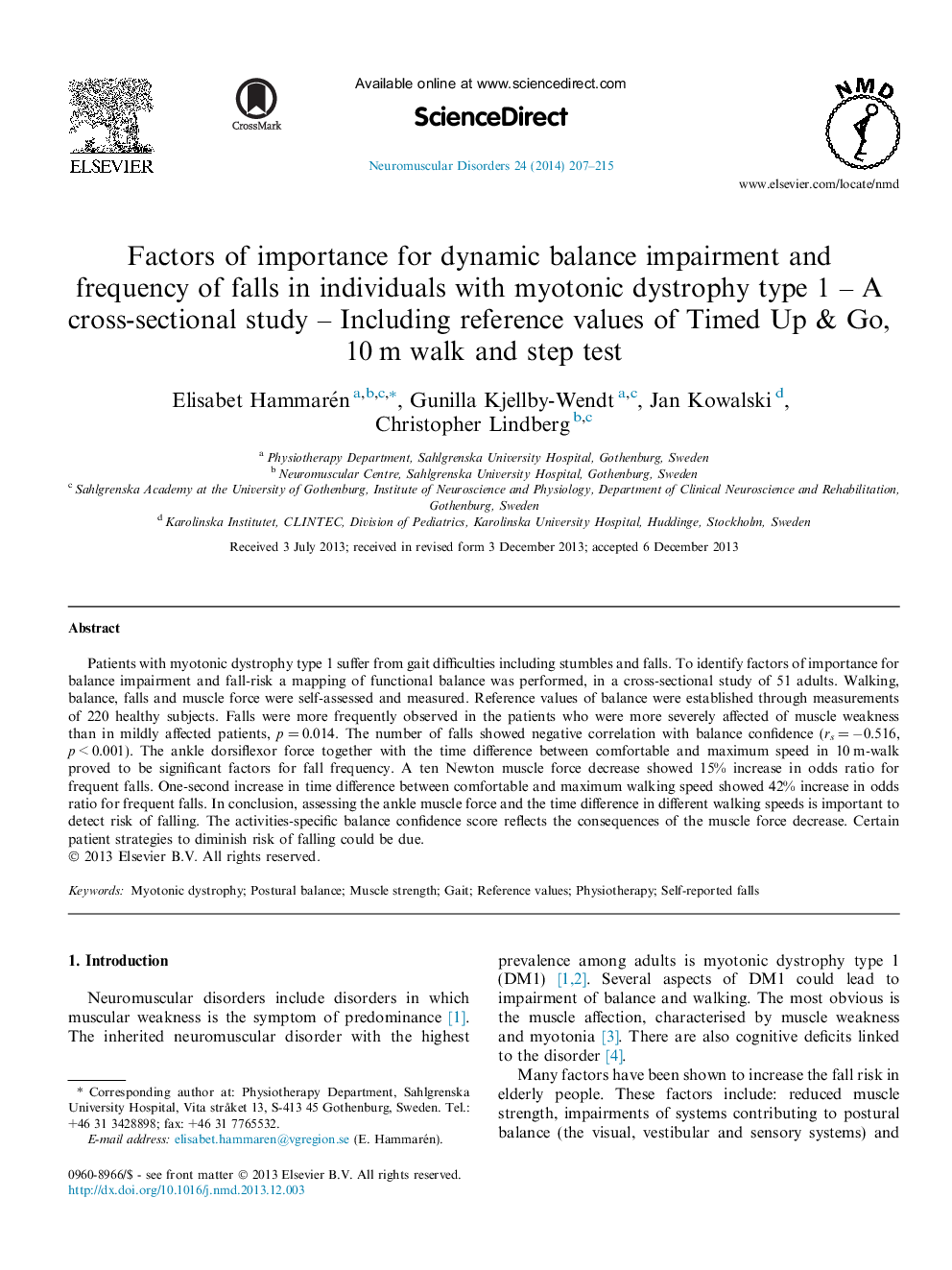| Article ID | Journal | Published Year | Pages | File Type |
|---|---|---|---|---|
| 6041424 | Neuromuscular Disorders | 2014 | 9 Pages |
Abstract
Patients with myotonic dystrophy type 1 suffer from gait difficulties including stumbles and falls. To identify factors of importance for balance impairment and fall-risk a mapping of functional balance was performed, in a cross-sectional study of 51 adults. Walking, balance, falls and muscle force were self-assessed and measured. Reference values of balance were established through measurements of 220 healthy subjects. Falls were more frequently observed in the patients who were more severely affected of muscle weakness than in mildly affected patients, p = 0.014. The number of falls showed negative correlation with balance confidence (rs = â0.516, p < 0.001). The ankle dorsiflexor force together with the time difference between comfortable and maximum speed in 10 m-walk proved to be significant factors for fall frequency. A ten Newton muscle force decrease showed 15% increase in odds ratio for frequent falls. One-second increase in time difference between comfortable and maximum walking speed showed 42% increase in odds ratio for frequent falls. In conclusion, assessing the ankle muscle force and the time difference in different walking speeds is important to detect risk of falling. The activities-specific balance confidence score reflects the consequences of the muscle force decrease. Certain patient strategies to diminish risk of falling could be due.
Related Topics
Life Sciences
Neuroscience
Developmental Neuroscience
Authors
Elisabet Hammarén, Gunilla Kjellby-Wendt, Jan Kowalski, Christopher Lindberg,
